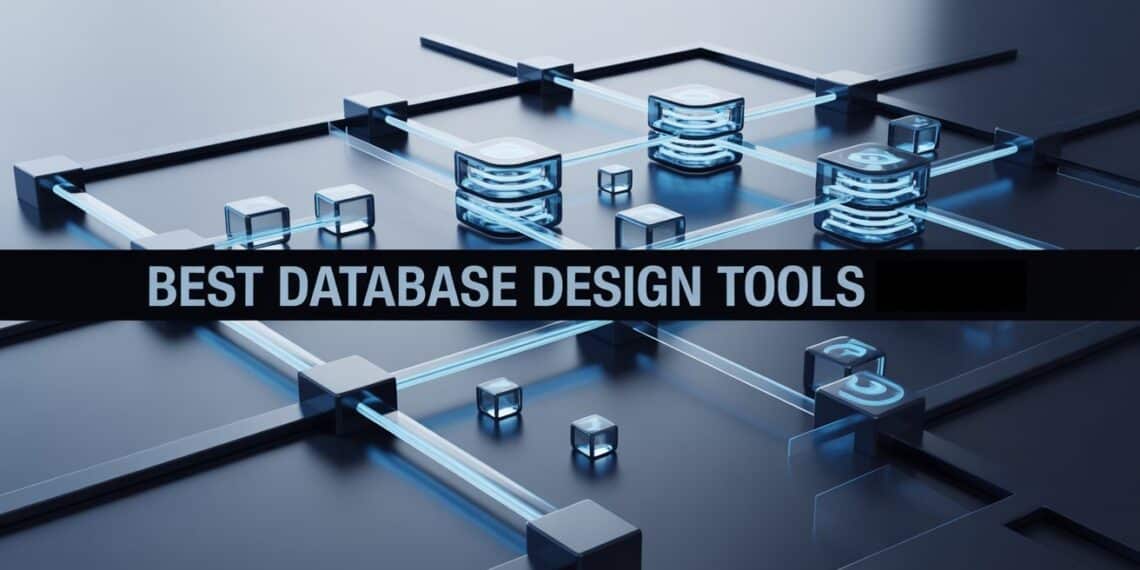Designing an efficient database structure is one of the most critical steps in building scalable, secure, and high-performing applications. A strong database schema ensures data consistency, improves query speed, and reduces redundancy forming the foundation of every software system.
In 2025, with the rise of AI-driven applications, microservices, and multi-cloud systems, database design tools have evolved significantly. They now support collaborative modeling, real-time validation, version control, and automated schema generation making them indispensable for modern developers, data engineers, and architects.
What Is a Database Model?
A database model defines how data is logically organized, connected, and managed within a system. It determines how data entities relate, the constraints that apply, and how users access and manipulate information.
The relational model remains the most common approach, but as of 2025, there’s increasing use of NoSQL, graph, and hybrid models for handling unstructured and semi-structured data.
Types of Database Models
Model Type |
Description |
Best For |
|---|---|---|
Relational Model |
Data organized into tables with defined relationships. |
Traditional business apps, ERP, CRM |
Document/NoSQL |
Stores JSON-like documents with flexible schemas. |
Modern web apps, IoT, analytics |
Graph Model |
Focuses on relationships between nodes and edges. |
Social networks, recommendation systems |
Key-Value Store |
High-speed, scalable key-value pairs. |
Caching, session storage |
Hierarchical/Network Models |
Tree-like or interconnected data structures. |
Legacy systems, telecom apps |
Why Data Modeling Matters in 2025
Effective data modeling helps organizations ensure:
-
Reduced redundancy and better storage efficiency
-
Improved data quality and compliance (especially under GDPR, HIPAA)
-
Easier scaling across multi-cloud or hybrid setups
-
Faster analytics and real-time insights
According to a 2025 Gartner report, businesses using automated data modeling tools saw a 35% faster deployment cycle and 50% fewer data errors in production.
Pros and Cons of Database Design Tools
Pros
-
Graphical design: Drag-and-drop interfaces make schema visualization and editing intuitive.
-
Automation: Many tools auto-generate SQL scripts and enforce referential integrity.
-
Collaboration: Real-time teamwork enables developers, DBAs, and analysts to work together seamlessly.
-
Versioning & rollback: Track and restore schema changes easily.
-
Data validation: Ensures compliance with DBMS-specific rules.
Cons
-
Learning curve: Advanced tools may require technical training.
-
Pricing: Premium versions can be costly for startups.
-
Platform dependency: Some tools are tied to specific OS or databases.
-
Performance overhead: Large-scale schema updates can slow execution.
Top 10 Database Design Tools in 2025
Below are the most effective and widely used database design tools updated with 2025 features, new pricing insights, and expert recommendations.
1. SqlDBM (Best for Cloud-Based Collaboration)
SqlDBM remains one of the top online SQL database modelers, now enhanced with AI-assisted schema optimization (2025 update). It supports forward and reverse engineering for MySQL, Snowflake, PostgreSQL, and SQL Server.
Key Features:
-
Web-based, no installation needed
-
Version history and autosave
-
Supports Git integration
-
Role-based team collaboration
-
Light and dark UI themes
Best For: Teams managing multiple SQL projects across the cloud.
Price: Free tier available; paid plans from $25/month.
Expert Tip: SqlDBM now integrates with Snowflake’s native governance tools, making it ideal for data warehousing teams.
2. Vertabelo (Best for Enterprise Teams)
Vertabelo is a browser-based modeling tool offering real-time collaboration, live SQL validation, and version control. Its AI-powered suggestions for key optimization (added in 2024) make it a favorite among enterprises.
Key Features:
-
Real-time SQL preview
-
XML export and import
-
Cloud-based autosave
-
Team permissions (Owner, Editor, Viewer)
Best For: Mid-size to large teams handling multiple relational databases.
Price: Starts at $24/month; 7-day free trial.
3. Lucidchart (Best for Visual Database Mapping)
Lucidchart extends beyond ER diagrams, it offers AI layout suggestions and integration with Confluence, Jira, and Google Workspace. Perfect for visually-oriented teams.
Key Features:
-
Drag-and-drop ERD creator
-
Automatic schema generation from DBMS
-
Export to MySQL, Oracle, or SQL Server
-
Team commenting and version control
Best For: Business analysts and dev teams designing conceptual and logical data models collaboratively.
4. DBDiagram.io (Best Lightweight Code-Based ERD Tool)
DBDiagram.io is simple yet powerful. Developers can write schema definitions using a DSL (Domain-Specific Language) and instantly render diagrams.
Key Features:
-
Code-first approach
-
Free and web-based
-
Exports to PDF, PNG, and SQL
-
Collaborative sharing with links
Best For: Developers who prefer keyboard-based schema creation.
New in 2025: GitHub integration for schema syncing.
5. Aqua Data Studio (Best for Cross-Platform Database Management)
Aqua Data Studio combines modeling, development, and analytics in one IDE. It supports relational, NoSQL, and cloud databases (MongoDB, Redshift, Snowflake).
Key Features:
-
Integrated query editor with syntax highlighting
-
Visual analytics dashboard
-
ERD generator and reverse engineering
-
Server performance monitoring
Best For: Data engineers and analysts managing large, diverse environments.
6. GitMind (Best for Quick Visual ERDs & Mind Maps)
GitMind is a free web-based tool offering mind mapping and ER diagram creation. It’s simple yet surprisingly robust for early-stage planning.
Key Features:
-
Library of shapes and connectors
-
Password-protected diagram sharing
-
Real-time collaboration
-
AI assistant for auto-layout
Best For: Small teams creating conceptual database diagrams before development.
7. MySQL Workbench (Best Native Tool for MySQL)
MySQL Workbench remains a go-to for MySQL users, featuring visual performance dashboards, query optimization, and migration support.
Key Features:
-
Visual design and SQL development
-
Forward and reverse engineering
-
Performance tuning dashboard
-
Migration from other databases
Best For: Developers managing MySQL and MariaDB environments.
8. Draw.io (diagrams.net) (Best for Free, Offline ERDs)
Draw.io offers offline editing, making it ideal for users prioritizing privacy. It integrates with Google Drive, Dropbox, and Atlassian tools.
Key Features:
-
100% free, no registration
-
Local and cloud storage
-
Custom templates for ERDs
-
Jira and Confluence integration
Best For: Teams needing a quick, secure, and flexible diagramming solution.
9. Creately (Best for Real-Time Collaboration)
Creately now uses AI shape placement and smart connectors, making diagram creation nearly automated. It supports over 50 diagram types, including ERDs and flowcharts.
Key Features:
-
Real-time multi-user collaboration
-
Pre-built database templates
-
Drag-and-drop interface
-
Integrations with Slack and Microsoft Teams
Best For: Remote or hybrid teams designing multiple system diagrams.
10. Erwin Data Modeler (Best for Enterprise-Scale Data Governance)
Erwin Data Modeler, owned by Quest Software, is a professional-grade data modeling suite. It supports metadata management, governance, and data lineage visualization essential for enterprise compliance.
Key Features:
-
Supports relational, NoSQL, and cloud databases
-
Reverse-engineering and metadata import
-
Business glossary and data governance tools
-
Collaboration across large teams
Best For: Large organizations with regulatory or data governance needs.
Comparison Table: Top Database Design Tools (2025)
Tool |
Collaboration |
Reverse Engineering |
Cloud-Based |
Pricing |
Best For |
|---|---|---|---|---|---|
SqlDBM |
✅ |
✅ |
✅ |
Free–$25/mo |
Cloud teams |
Vertabelo |
✅ |
✅ |
✅ |
From $24/mo |
Enterprises |
Lucidchart |
✅ |
✅ |
✅ |
Freemium |
Designers |
DBDiagram.io |
⚙️ (Link Share) |
✅ |
✅ |
Free |
Developers |
Aqua Data Studio |
✅ |
✅ |
❌ |
From $49/mo |
DB Engineers |
GitMind |
✅ |
⚙️ |
✅ |
Free |
Planners |
MySQL Workbench |
⚙️ |
✅ |
❌ |
Free |
MySQL users |
Draw.io |
⚙️ |
⚙️ |
✅ |
Free |
General use |
Creately |
✅ |
⚙️ |
✅ |
Freemium |
Teams |
Erwin Data Modeler |
✅ |
✅ |
✅ |
Enterprise |
Governance |
Expert Insights (2025)
Modern database modeling is shifting toward AI-driven automation and metadata intelligence. Tools like SqlDBM and Vertabelo now analyze schema complexity, suggest optimization patterns, and integrate directly with CI/CD pipelines for real-time validation.
Additionally, data lineage tracking and collaboration dashboards are becoming standard, bridging the gap between developers, analysts, and compliance officers.
FAQs
1. Which database design tool is best for beginners?
DBDiagram.io and GitMind are simple, free, and ideal for newcomers who prefer quick diagramming without technical setup.
2. What’s the difference between data modeling and database design?
Data modeling defines what data is needed and how it’s related conceptually, while database design focuses on the technical implementation within a specific DBMS.
3. Can AI tools help in database design?
Yes as of 2025, several tools use AI to auto-suggest relationships, detect anomalies, and optimize normalization levels.
4. Which tool supports the most databases?
Aqua Data Studio and Erwin Data Modeler support the widest range from relational to NoSQL and cloud-native DBs.
5. Is there a free tool for professional use?
Yes. Draw.io and MySQL Workbench remain top free options with advanced features suitable for professional environments.









